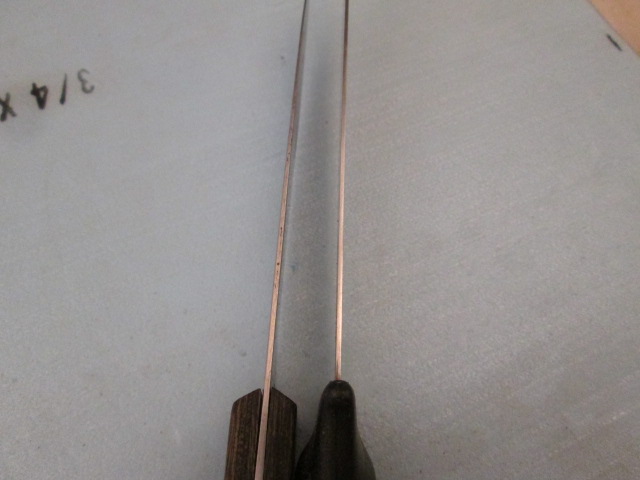Okay, here are the knives that I use for foamie work.
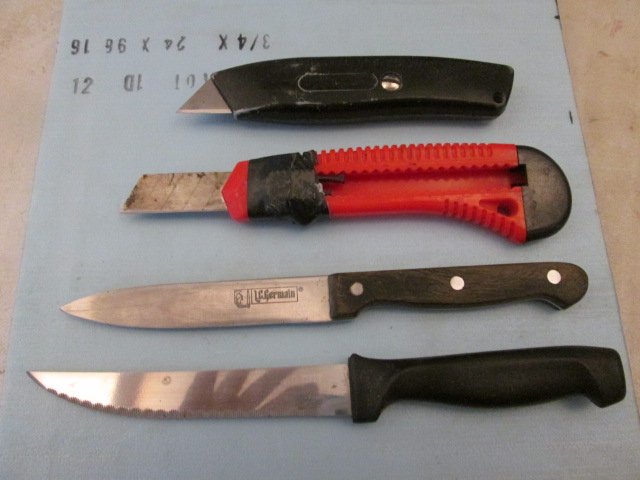
From top to bottom they are:
A cheap utility knife that I got free from work when they took all of the std. utility knives away from the masses and issued safety style box cutters. I much prefer my good Stanley which has a superior case design with better detent mechanism. This one won’t extend or retract when the case screw is tightened down all the way.
A cheap plastic snap blade style extending utility knife; couple of bucks at the hdwr store. This is my second one. The blade detent thumb adjusters tend to break, hence the electrical tape to make it a fixed blade. Also, with the long scoring technique, having the full length blade extended out all the way puts a lot of leverage on the plastic pin that goes thru the hole in the blade; the pin sheared off on my first one, so I picked up another, but use the straight edge steak knife for those long slicing cuts now.
The third one is now my go to blade for most operations requiring hand cutting; long straight panel cuts, trimming routed corners square, scoring out pockets, basically anything that I can’t be bothered to set up and/or does not require the accuracy of a power tool. IIRC the cost was under a dollar, something like 30 cents at Goodwill. The wooden handle and full tang feel better in my hand than the plastic handle on the serrated one.
The last one, the classic cheap serrated steak knife, also for a couple of coins at Goodwill, is used very little. I prefer the stiffer blade of the straight edged knife for better control with less incidental gouging.
You can see the serrations better here and how far they ride up the side. Maybe a different style of serration would work better, more like a bread knife with wider but fewer serrations that are more scalloped shaped?
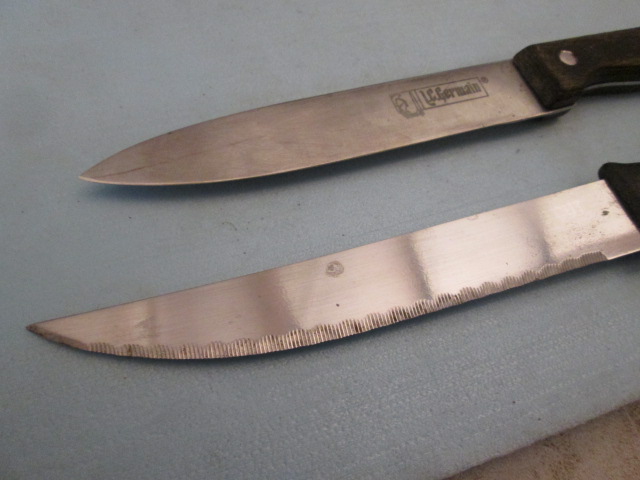
Contrary to what I implied in my previous post, I can flex both of the steak knives enough to flush cut, but the serrated one is more flexible.
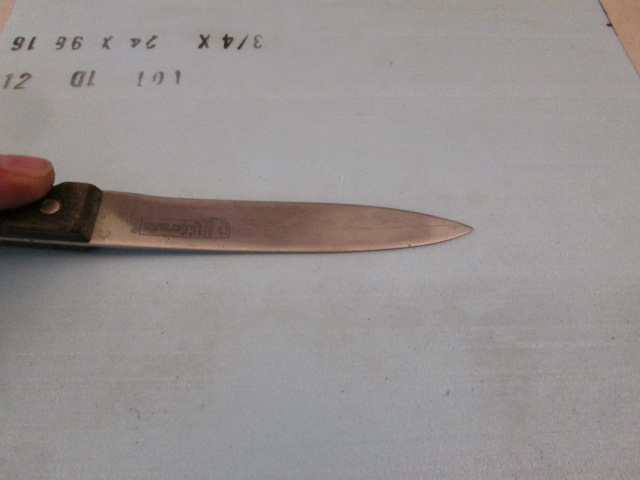
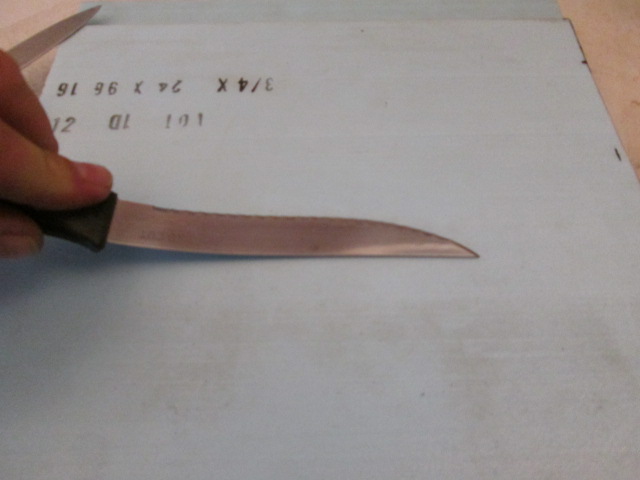
I was also mistaking about the serrated not having a bevel on both sides, but the back side is beveled considerably less.
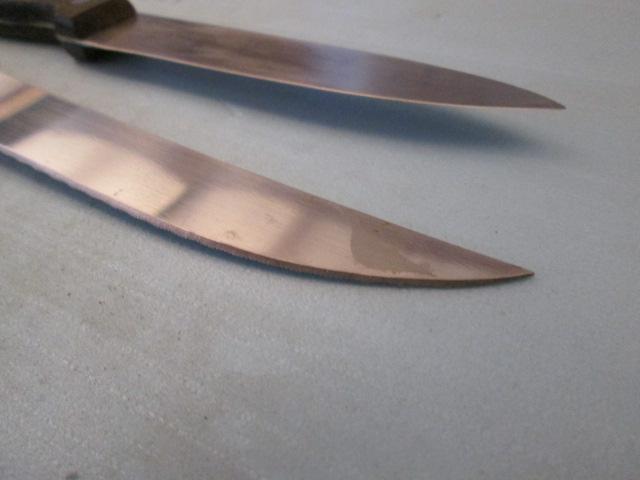
One last pic comparing the steak knives. Hard to see, but the straight edge on the left with full tang is slightly thicker in the blade (even thicker in the tang) and is of much better blade quality. I suspect that when it was newer it wasn't as cheap.
